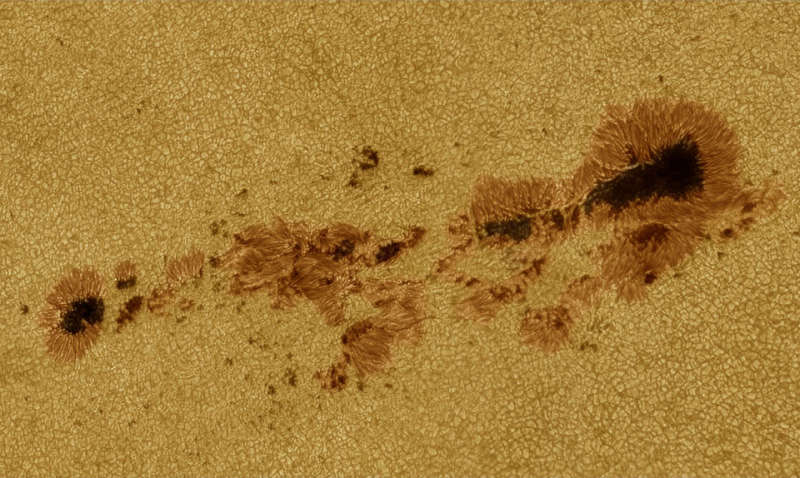
|
Credit & Copyright: Damian Peach
Explanation:
One of the largest sunspot regions in recent years is now crossing the Sun.
This region of convoluted magnetic fields may well produce a
solar flare that releases a cloud of energetic particles
into the Solar System.
Were a very powerful cloud to impact the
Earth's magnetosphere, it could be dangerous to Earth-orbiting astronauts and
satellites.
Conversely, the impact of even a less energetic cloud might create
picturesque aurora.
Pictured above
is the sunspot region as it appeared two days ago.
The rightmost part of this region has been cataloged as
AR 11785, while the left
part as
AR 11787.
The darkest sunspot regions contain
nearly vertical magnetic fields and are called umbras, while the surrounding bronze
regions -- more clearly showing stringy magnetic flux tubes
-- are called penumbras.
Churning solar granules, many about 1000 km across,
compose the yellow background region.
No one knows what this sunspot region will do, but space weather researchers are
monitoring it closely.
Random APOD:
Click here to surf the universe
|
January February March April May June July August September October November December |
| ||||||||||||||||||||||||||||||||||||||||||||||||
NASA Web Site Statements, Warnings, and Disclaimers
NASA Official: Jay Norris. Specific rights apply.
A service of: LHEA at NASA / GSFC
& Michigan Tech. U.
Based on Astronomy Picture
Of the Day
Publications with keywords: sunspot
Publications with words: sunspot
See also:
